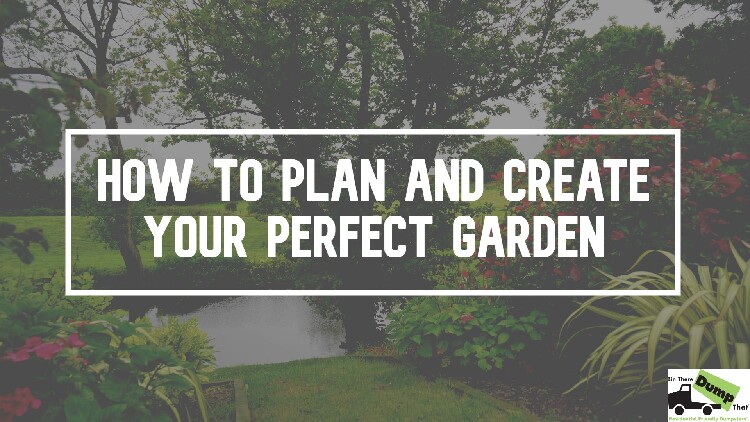
Designing your garden is an exciting endeavor it can increase your home's curb appeal.
In summer, you'll have a place to sit, relax, entertain and let the children play under the warmth of the sun. In winter, you'll have a view of the wonderland that you've renovated while enjoying a hot cup of java from the inside.
Or maybe, you're just a bit bored and want to create something that is beautiful and colorful. Garden landscaping is a productive activity to craft an attractive space to grow floras that will improve your surroundings.
But, before you roll up your sleeves and get dirty, read this guide it will save you time, money, and elbow grease to get a garden design that is right for you.
Planning your garden holds the key to the perfect garden of your dreams. It will be easy when you break your landscaping design into individual ideas. It can be formal or casual but put this on paper, the inclusion of more details will result in a more thorough design.
Consider your garden size, existing vegetation and everything that is out there. Find spaces where the sun shines, shady areas, where the wind blows, and where the best soil is. Segregate your plants according to these conditions and purchase some to avoid bald patches.
Moreover, note the paths that are often visited by people or pets. You might need some bricks or stones or create a new path to avoid contact with the plants.
Select your plants according to size, growth habit, flowering time, flower color, light needs, and win tolerance.
Irrigation systems are another important detail to your plan, whether it's a sprinkler system or a faucet and a water hose. Plants need water and you don't want excess water around your house, good drainage will keep this away.

Do you want a formal or informal garden? Be a host for gatherings? A low maintenance garden to spend more time with your plants? Or just a place to hang out with your family?
Gather ideas on what you want to create. There are a lot of ways to get inspiration for your dream garden. Browse the internet, it offers useful information which you can use and with pictures too. Peruse gardening books for discovering and realizing your perfect outdoor space.
Or visit your local garden store and inquire about the plants that fit your area and to see materials and planting combinations.
With the plan in place and you know what you want the only thing stopping you is the budget. If the cost goes overboard a bit don't be dissuaded from pursuing your idea. You will be missing a beautiful space in your home if you get discouraged.
Select your materials with care and check the quality upon delivery, gather all the tools that you'll need, and don't forget to have a fun time while gardening. Some landscaping materials are:
Using your plan layout the spaces in your yard using string and stakes.
You will produce a greater effect bedding plants and shrubs if you mass plant together in groups of three or five.
Flowers are wonderful the mesmerizing colors add to the landscape, but they don't have the final say when it comes to aesthetics in the garden. Expert plant growers tend to emphasize texture and form which create fascinating contrasts rather than blooms.
Group plants with the same growing requirements like sunlight, soil and watering needs. Grouping them together will save you from maintenance work like dragging the garden hose around, weeds removal, and more.
Include placement of paths for frequently traveled areas gravel, brick or concrete for flooring.
Get rid of landscaping waste, contact your local community office to see what can be done.
 You should know how to weed and fertilize your garden to give plants every opportunity to grow well. Too much fertilizer can burn roots reducing the plant's ability to absorb water. Lack of water makes plants susceptible to change in environmental conditions like heat and drought.
You should know how to weed and fertilize your garden to give plants every opportunity to grow well. Too much fertilizer can burn roots reducing the plant's ability to absorb water. Lack of water makes plants susceptible to change in environmental conditions like heat and drought.
If you notice insect infestation hire the services of your local pest control services provider. They have the expertise to identify your pest problems and use formulations that are safe and environment-friendly.
Plants need water and so do many diseases. Pathogens in the soil thrive with water, avoid these by limiting water on the plant's foliage. Soaker hoses and drip irrigation achieve this, in case you are watering by hand, prevent the leaves from getting wet as you water the roots. In potted plants, do not allow water to settle on top of the soil prick the soil with a pointed object for water to reach the roots. Waterlogged soil stimulates the growth of fungi.
Avoid overcrowding, plants that are too close grows poorly they compete for light, water, and nutrients.
Friendly, professional customer service, plus fair pricing, equals value.